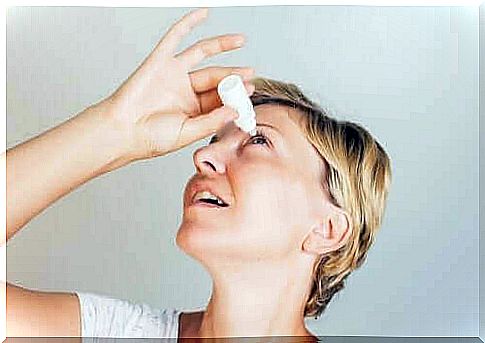Use And Side Effects Of Brimonidine

The active substance, brimonidine, is used to reduce intraocular pressure (IOP). Medical professionals recommend it for patients with ocular hypertension and also the treatment of open-angle glaucoma. Find out all about the use and side effects of brimonidine in this article.
Glaucoma is the primary risk factor for ocular hypertension, which can lead to so much pressure in the eye that it can damage the optic nerve and cause serious and irreparable loss of vision.
What is brimonidine?
Brimonidine belongs to a class of medicines called alpha-adrenergic agonists and works to reduce the amount of fluid inside the eye.
Alpha-adrenergic agonists are substances that have similar or identical effects to adrenaline. In addition, they are also known as the sympathomimetic, meaning they mimic the sympathetic nervous system.
The sympathetic nervous system is one of the divisions of the automatic nervous system. It is responsible for unconscious functions, such as:
- Dilation of pupils.
- Decreased saliva production.
- Increased heart rate.
- The inhibition of digestive organs.
How should I use brimonidine?

Brimonidine is available as ophthalmic eye drops. In adult and elderly patients, the recommended dose is one drop in each affected eye twice a day with an interval of approximately twelve hours between doses.
Instructions and recommendation for use
Please note that you should not use this type of medicine if the seal is broken. It is important to wash your hands thoroughly before opening the bottle.
- First, lean your head back and look up at the ceiling.
- Then gently pull your lower eyelid down.
- Then place the bottle upside down and you press lightly on it until you get an eye drop in the affected eye.
- Then close your eye.
- For optimal use, and to avoid possible systemic uptake, medical professionals recommend pressing on the tear duct for one minute after the application of each drop. If patients use more than one ophthalmic remedy, they should use each with an interval of approximately 15 minutes between each use.
- Once the patient has opened the medicine, they should use it within 28 days.
Use and side effects of brimonidine
The most common side effects are:
- Dry mouth.
- Ocular hyperemia.
- Ocular itching and burning sensation.
- Headache.
- Sleepiness.
However, these are usually short-term side effects that are not so severe that they require you to stop using brimonidine.
Some common side effects include:
- Tension in the eyes.
- Photophobia or sensitivity to light.
- Swollen eyelids.
- Asthenia.
- Although rare, palpitations or arrhythmias may occur.

If the following symptoms occur, talk to a doctor immediately:
- Rash.
- Problems breathing.
- Fainting.
- Dizziness.
- Nausea.
Contraindications to brimonidine
Brimonidine treatment is contraindicated in case of:
- Hypersensitivity to the active substance or to any of the excipients.
- Babies and children under two years old.
- Patients treated with MAOIs.
- Patients treated with antidepressants that affect the transmission of norepinephrine (for example, tricyclic antidepressants).
Can I use it if I am pregnant?
Some animal studies show that brimonidine does not cause teratogenic effects. However, studies performed in rats in which higher levels of brimonidine were used than those in the treatment of humans showed decreased postnatal growth.
The safety of this medicine during pregnancy in humans has not yet been established. However, the use of brimonidine is not recommended during pregnancy.
Medical professionals will only consider it if the possible benefits to the mother justify the possible risks to the fetus. However, they do not recommend it while breastfeeding.









